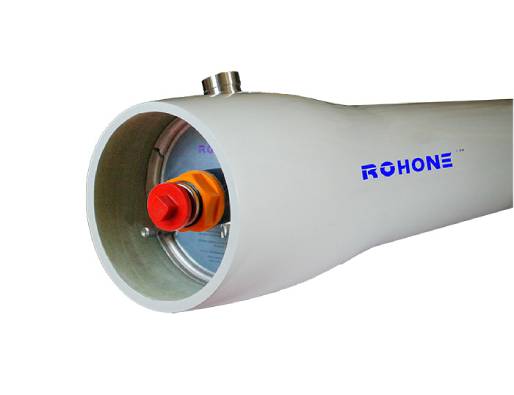Reverse osmosis membrane pressure vessels have pretreatment. The three parts of reverse osmosis membrane pressure vessels are very simple, and the effect of water treatment is also obvious. In recent years, they have been used in many water purification projects. Has played an important role. So after buying a reverse osmosis membrane, how to install a reverse osmosis membrane? You can refer to the installation diagram of the reverse osmosis membrane, but it is best not to install it by yourself. Ask professional personnel to install it, which is more secure.
1. Preparation of industrial frp ro pressure vessels before installation
① Clean the pressure vessel: Before installing the reverse osmosis membrane element, the internal environment of the pressure vessel needs to be cleaned to prevent dirt or debris from depositing on the outer surface of the membrane element. It is recommended that after immersing the sponge ball in 50% glycerin solution, use appropriate tools to scrub back and forth inside the membrane shell to clean the inner wall of the membrane shell. During the cleaning process, care should be taken not to allow tools to scratch the inner surface of the membrane shell.
② Flushing the system piping: If the system is brand new, the system piping needs to be fully flushed before installing the reverse osmosis membrane to prevent contact with the membrane elements such as debris, solvents, or residual chlorine.
2. Installation order of reverse osmosis membrane elements
The membrane element must be installed in its corresponding pressure vessel.
① Usually the membrane element is placed in a sodium bisulfite solution with a concentration of 1% to be stored. First, it should be fully rinsed with pure water.
② There is a concentrated water seal ring on the water supply side of the membrane element. Note that the installation direction of the seal ring is to open the mouth toward the upstream. The function of the concentrated water seal ring is to ensure that all the raw water flows into the membrane element without side flow. The flow rate of the original water will make the opening of the concentrated water seal ring tightly pressurized and sealed toward the inner wall of the pressure vessel. If the installation direction of the sealing ring is reversed, the raw water cannot be sealed, causing part of the raw water to flow to the outside of the membrane element, reducing the flow rate of the membrane surface, resulting in fouling, and thus shortening the service life of the membrane.
③ Make sure that the O-ring is installed at the specified position of the connecting accessory. During installation, pay attention to whether there are any scratches or attachments on the surface of the O-ring and the connector. Be careful not to twist the O-ring installation. If the connector leaks, the raw water will enter the product water, which will cause the product water quality to decline. When installing on the water collection pipe, the surface of the O-ring and the water collection pipe is moistened with pure water, distilled water or glycerin to facilitate installation.
④Remove the end plates on both sides of the pressure vessel to install the membrane element. Install the adapter on the concentrated water side (downstream) of the first branch membrane element. Then push the membrane element in the direction of raw water flow and install it in the pressure vessel.

Reverse Osmosis Membrane Pressure Vessels
When multiple reverse osmosis membrane elements are installed continuously, before the previous membrane element completely enters the membrane shell, it is necessary to prepare the next membrane element to connect with the connecting piece. At the same time, care should be taken not to allow the membrane element to contact the edge of the pressure vessel to prevent scratches, and try to push it into the pressure vessel in parallel.
⑤ After confirming the connection of the pressure vessel adapter, connect the concentrated water side end plate to the membrane shell.
⑥After installing the end plate on the concentrated water side, the membrane element device should be pushed again from the inlet side to the concentrated water side to ensure that it is completely tightly connected. Then carry out the installation operation of the inlet side end plate. When installing the inlet side end plate, pay attention to measuring the gap between the end plate and the adapter. If there is a gap, install a plastic gasket with an inner diameter greater than the outer diameter of the adapter and a thickness of 1/4 "-1/8" until the end plate cannot be fully installed in place. At this time, remove a gasket and install it again. The end plate is sufficient.
3. Disassembly of reverse osmosis membrane elements
①After removing the pipes around the pressure vessel, you need to remove the end plate devices at both ends of the pressure vessel.
② Push the membrane element downstream from the raw water inlet, and take out the membrane element one by one on the concentrated water outlet side. Do not use hard metal rods when the reverse osmosis membrane element is pushed out.
③ If the storage method of the reverse osmosis membrane element is not strictly followed, it will most likely cause a relatively serious change in membrane performance, so users need to pay full attention to it.
The steps described above are also very comprehensive, but in order to ensure a good installation effect and will not affect future use, it is better to ask professional and regular manufacturers to help install.